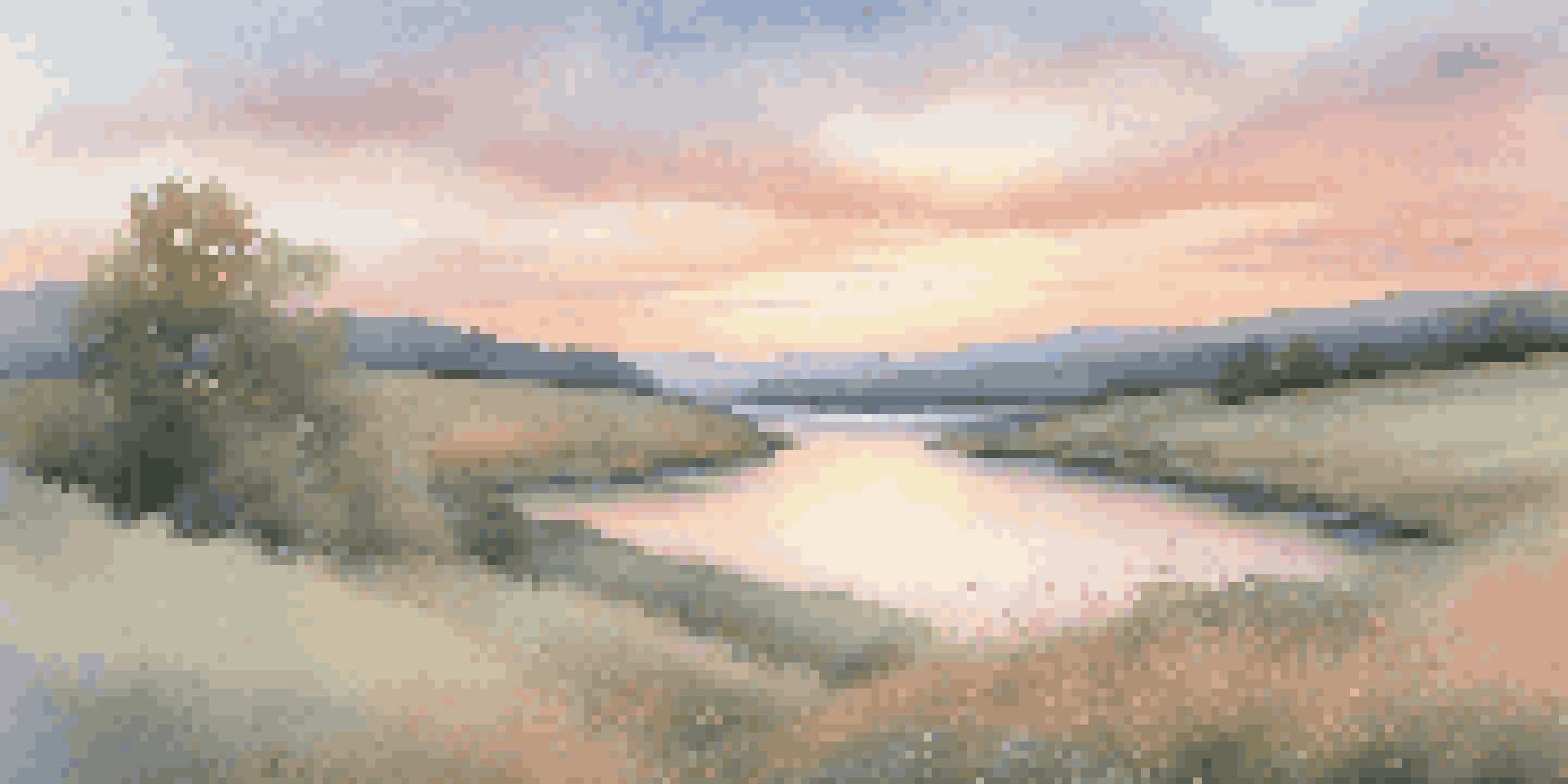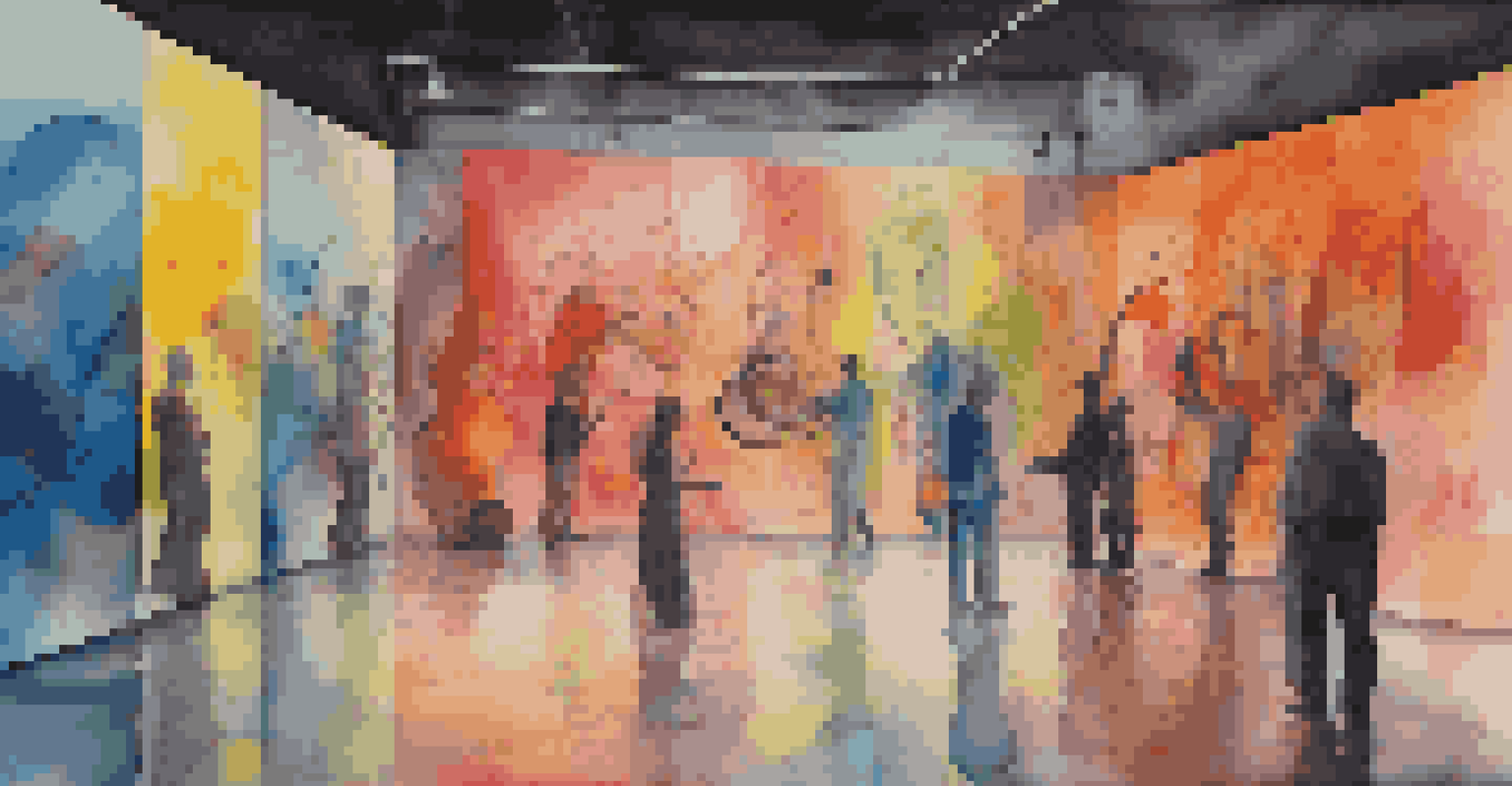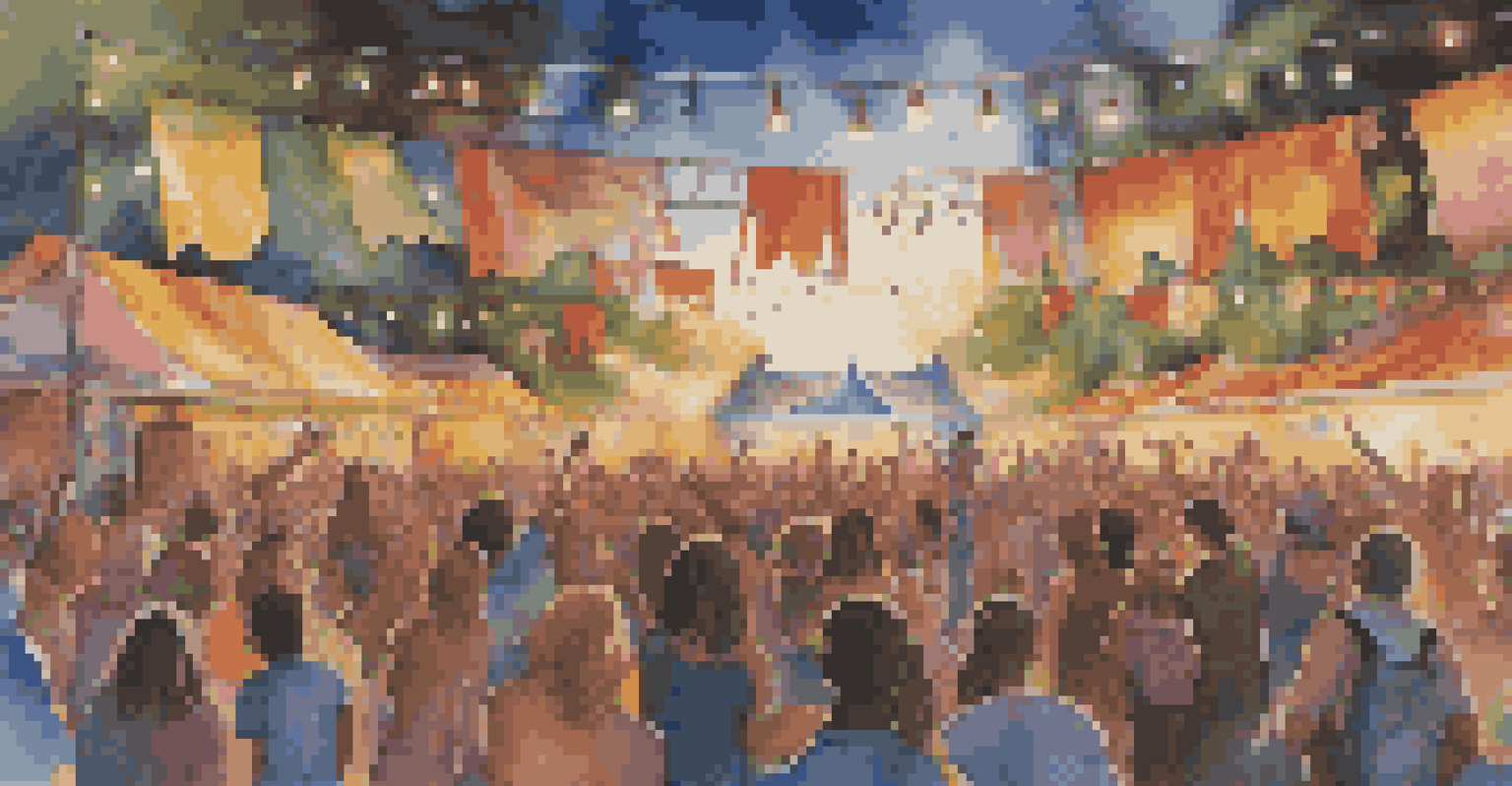The Interrelationship Between Music and Visual Arts in Culture

The Historical Bond Between Music and Visual Arts
From ancient civilizations to modern times, music and visual arts have shared a profound connection. In many cultures, music was often accompanied by visual representations, whether through dance, painting, or sculpture. For instance, in ancient Greece, music played a vital role in theatrical performances, where visual storytelling was enhanced by melodic accompaniment.
Music is the shorthand of emotion.
The Renaissance period further exemplified this interrelationship, as artists like Leonardo da Vinci explored the harmony of sound and sight. Composers and painters often inspired one another, creating a rich tapestry of cultural expression. This historical interplay showcases how these two forms of art have evolved together, influencing each other across centuries.
Today, we can see this partnership in various forms, from music videos that emphasize visual storytelling to immersive art installations with soundscapes. This ongoing collaboration highlights the timeless bond between music and visual arts, reminding us of their shared ability to evoke emotion and convey meaning.
The Emotional Impact of Music on Visual Art
Music has a remarkable ability to evoke emotions, which can significantly influence visual art creation. Many artists listen to specific genres or songs while working, allowing the music's mood to shape their creative process. For example, a painter might choose vibrant colors and energetic brushstrokes while listening to upbeat music, reflecting the rhythm and intensity of the sound.

Moreover, visual artworks often aim to express the same emotions that music conveys. Consider the way a serene landscape painting can evoke feelings of peace similar to a gentle melody. This synergy between the two art forms allows audiences to experience a deeper emotional resonance, bridging the gap between auditory and visual experiences.
Music and Visual Arts' Historic Bond
Throughout history, music and visual arts have influenced each other, creating a rich tapestry of cultural expression.
In galleries and museums, the combination of music and visual art creates a multi-sensory experience that enhances the appreciation of both. Curators often select soundtracks that complement the visual elements, inviting viewers to engage more fully with the artwork and its emotional undertones.
Cultural Reflections: Music and Art as Social Commentary
Both music and visual arts serve as powerful tools for social commentary, reflecting cultural values and societal issues. Artists throughout history have used their work to challenge norms, provoke thought, and inspire change. For instance, protest music often finds a visual counterpart in graffiti or political art, creating a unified message that resonates with audiences.
Art is the most beautiful of all lies.
In contemporary society, this relationship is more apparent than ever. Music festivals often feature visual artists who create live installations, amplifying the themes expressed in the music. This collaborative approach fosters a collective consciousness, encouraging audiences to engage with pressing social issues through both sound and sight.
By intertwining music and visual arts, we witness a dynamic dialogue that transcends boundaries. It emphasizes how culture can be shaped and expressed through various mediums, allowing individuals to confront and reflect on the world around them.
The Role of Technology in Merging Music and Visual Arts
Advancements in technology have revolutionized the way music and visual arts interact. Digital platforms enable artists to experiment with multimedia presentations, creating immersive experiences that blend sound and imagery. For example, virtual reality concerts allow audiences to explore a 3D environment where music and visual elements coexist.
Furthermore, software tools allow musicians and visual artists to collaborate seamlessly, breaking down traditional barriers. Artists can now create music videos that are not only visually stunning but also intricately synchronized with the sound, enhancing the overall experience. This technological fusion opens up new avenues for creative expression, making art more accessible and engaging.
Emotional Synergy in Art Forms
The interplay between music and visual arts enhances emotional resonance, allowing audiences to connect more deeply with both mediums.
As we move forward, the relationship between music and visual arts will continue to evolve alongside technological innovations. This evolution not only enriches our cultural landscape but also encourages artists to push the boundaries of their creativity, redefining what is possible in the realm of artistic collaboration.
Music as Inspiration for Visual Artists
Many visual artists draw inspiration from music, using it as a catalyst for their creative vision. Whether it's a specific song that resonates with them or a genre that sparks their imagination, music often serves as a muse. For example, the works of artists like Wassily Kandinsky were heavily influenced by music, with his paintings reflecting the rhythms and harmonies he heard.
Similarly, contemporary artists may create installations or paintings that respond to the themes of a particular album or song. This connection not only enhances the artist's creative process but also invites viewers to experience the artwork through the lens of the music that inspired it. This interplay highlights the dynamic relationship between sound and visual representation.
By exploring how music influences visual art, we can appreciate the depth of this relationship. It reminds us that creativity knows no bounds and that inspiration can flow freely between different forms of artistic expression.
The Influence of Visual Arts on Music Production
Just as music inspires visual artists, the reverse is also true; visual arts significantly influence music production. Album artwork, music videos, and stage designs are all visual elements that contribute to a musician's identity and brand. For instance, iconic album covers, like those of The Beatles or Pink Floyd, have become art pieces in their own right, shaping the way we perceive the music within.
Moreover, visual aesthetics play a crucial role in live performances. Musicians often collaborate with visual artists to create stunning stage designs that enhance the audience's experience. These visual elements can range from lighting effects to intricate backdrops, all designed to elevate the performance and create a memorable atmosphere.
Collaborative Future of Art
The future of music and visual arts lies in innovative collaborations that push creative boundaries and engage audiences in new ways.
By recognizing the impact of visual arts on music production, we can appreciate the collaborative spirit that drives both forms of art. This mutual influence enriches the cultural landscape, demonstrating how interconnected our creative expressions truly are.
Collaborative Projects: The Future of Music and Visual Arts
Looking ahead, the future of music and visual arts is bright with collaborative projects that push the envelope of creativity. Artists from both fields are increasingly joining forces to create unique experiences that engage audiences on multiple levels. From multimedia art installations to cross-genre performances, these collaborations offer fresh perspectives on the relationship between sound and sight.
Festivals and events that celebrate this fusion are gaining popularity, encouraging artists to experiment and innovate. For instance, events like Coachella or Art Basel often showcase collaborations that blend music and visual arts, creating a vibrant atmosphere where creativity flourishes. These gatherings foster a sense of community and inspire new ideas that can shape the future of cultural expression.

As we embrace the potential of these collaborative projects, we can look forward to a more interconnected artistic landscape. This evolution promises to enhance our cultural experiences, allowing us to engage with music and visual arts in exciting and transformative ways.